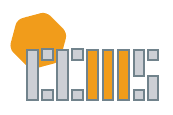Abstract / Synopsis
Undergraduates in an introductory statistics class at a rural Southeastern college were assigned three creativity-fostering projects: statistics vocabulary crossword puzzle, word wall, and graffiti art poster. Given math anxiety, fear of failure, and lack of enthusiasm, it seemed imperative to spark interest and involvement. Rhodes 4P’s model (1961) served as the framework for this intrinsic case study involving 62 students. Independent thinking and research, peer collaboration, and use of art supplies within this model (person, press, process and product) generated remarkable learning outcomes. Grading rubrics focused on originality, quality and statistics content. Projects were classified into three qualitative categories ranging from lowest to highest: developing, satisfactory, and outstanding. Post-hoc student opinion surveys revealed therapeutic benefits of social interactions with peers and working together. Students enjoyed using art supplies, working with their hands, and engaging in meaningful constructive processes, in contrast to just writing class notes and doing online homework. Teachers are encouraged to acknowledge their repressed inner creative strengths and learn ways to foster creativity among students. Traditional and adaptive curriculum settings can utilize math art projects as qualitative authentic assessments in addition to traditional methods.
DOI
10.5642/jhummath.202002.22
Recommended Citation
Margaret Adams, "Three Creativity-Fostering Projects Implemented in a Statistics Class," Journal of Humanistic Mathematics, Volume 10 Issue 2 (July 2020), pages 484-510. DOI: 10.5642/jhummath.202002.22. Available at: https://scholarship.claremont.edu/jhm/vol10/iss2/22
Terms of Use & License Information
Included in
Arts and Humanities Commons, Educational Methods Commons, Higher Education Commons, Mathematics Commons
